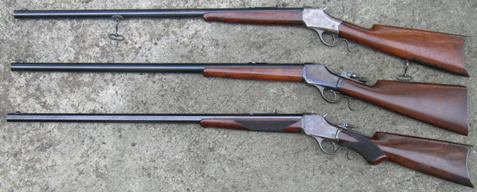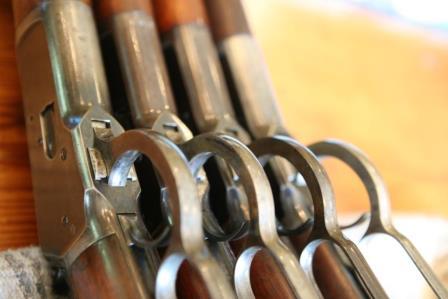Researching a recent acquisition (1950 94) and found this thread.
My serial is 1742092 but has the shorter forend. I see no indication it was changed/replaced.
How carved in stone is the serial number range above? I like originality on whatever I’m into (guns, guitars, cars etc…) and little things like this tend to bug me.
[email protected] said
Researching a recent acquisition (1950 94) and found this thread.My serial is 1742092 but has the shorter forend. I see no indication it was changed/replaced.
How carved in stone is the serial number range above? I like originality on whatever I’m into (guns, guitars, cars etc…) and little things like this tend to bug me.
Your Model 94 is in the correct time zone for it to have either a long or a short forend stock. The serial number range I mentioned above is where more than 90% of the transition took place.
Bert
WACA Historian & Board of Director Member #6571L

[email protected] said
Researching a recent acquisition (1950 94) and found this thread.My serial is 1742092 but has the shorter forend. I see no indication it was changed/replaced.
How carved in stone is the serial number range above? I like originality on whatever I’m into (guns, guitars, cars etc…) and little things like this tend to bug me.
If you are going to be collecting Winchesters you may have to get used to a few night of poor sleep! During the production of both the 1894/94 and the 1892/92 rifles it is pretty much the rule that changes from one style of component or the layout of various areas of stamped writing will occur over a production length of thousands of rifles. Winchester was not a place where “starting Monday” this…. will change to the newer form. For instance, on the Model 92’s in the SN range from 961800 to 967800 there are 3 distinct different upper tang stamps in use!!! And their occurrence flip flops back and forth from one style to another. Glaring errors are pretty easy to spot but even then there are many rifles where a receiver may have been serialized and then sat in the warehouse for 3 to 5 years before being used to create a full rifle so you end up with uncommon mixtures of tang stamp styles, proof marks and barrel addresses.
Start counting sheep
Michael

Model 1892 / Model 61 Collector, Research, Valuation
[email protected] said
Thanks Bert…
You are welcome. Which caliber is your Model 94 (so that I can add it to my research survey) ?
Bert
WACA Historian & Board of Director Member #6571L

twobit said
If you are going to be collecting Winchesters you may have to get used to a few night of poor sleep! During the production of both the 1894/94 and the 1892/92 rifles it is pretty much the rule that changes from one style of component or the layout of various areas of stamped writing will occur over a production length of thousands of rifles. Winchester was not a place where “starting Monday” this…. will change to the newer form. For instance, on the Model 92’s in the SN range from 961800 to 967800 there are 3 distinct different upper tang stamps in use!!! And their occurrence flip flops back and forth from one style to another. Glaring errors are pretty easy to spot but even then there are many rifles where a receiver may have been serialized and then sat in the warehouse for 3 to 5 years before being used to create a full rifle so you end up with uncommon mixtures of tang stamp styles, proof marks and barrel addresses.
Start counting sheep
Michael
So I’m finding out as I read these forums:) very interesting stuff and sooo much knowledge here. Great resource for those of us just starting out. Just in the last week with the help of this site I’ve learned plenty including the fact that this rifle is a 1950 not a ’51 as it was described when I purchased it (thanks to the S/N lookup feature here).
1 Guest(s)


 Log In
Log In Members
Members Home
Home

 Add Reply
Add Reply Add Topic
Add Topic Offline
Offline




